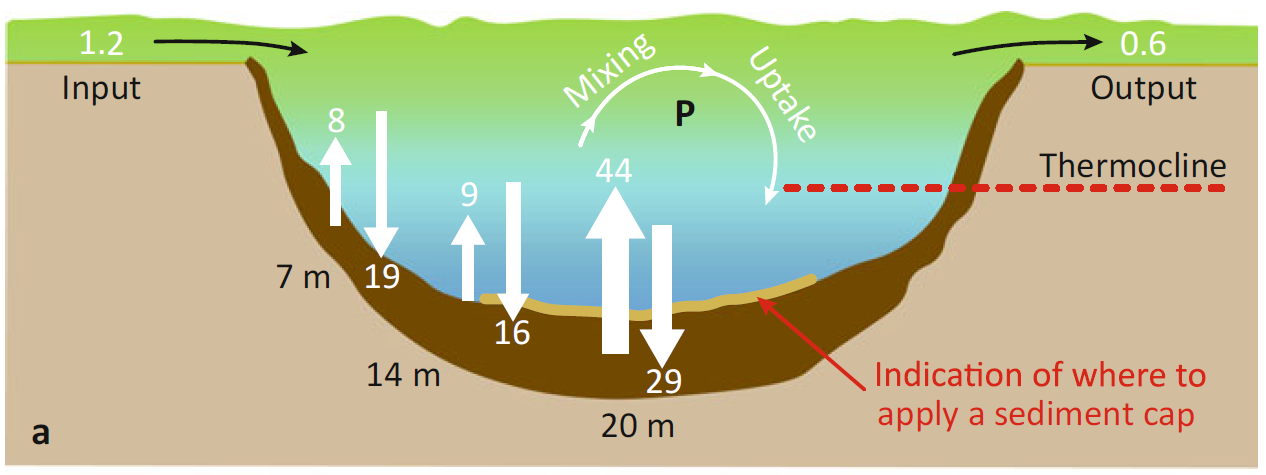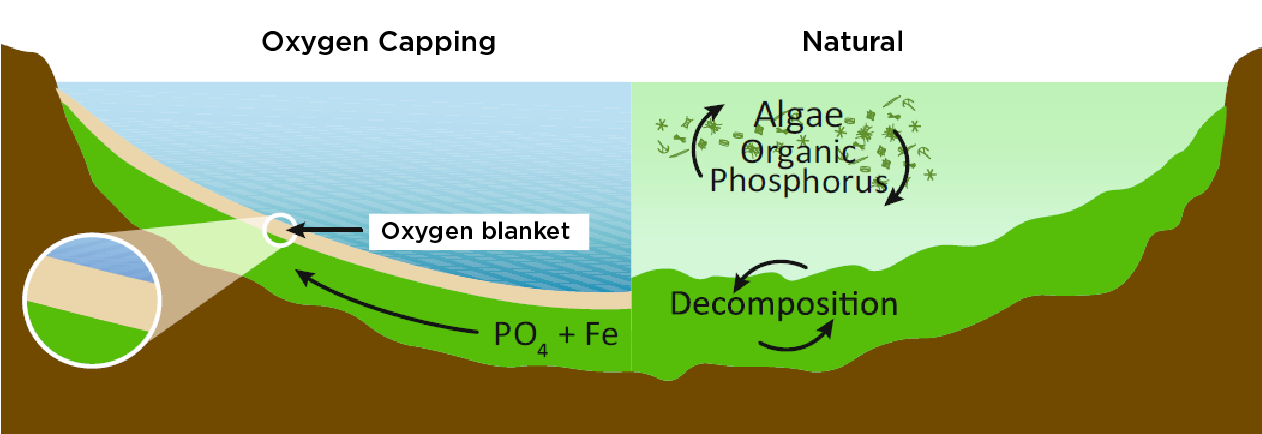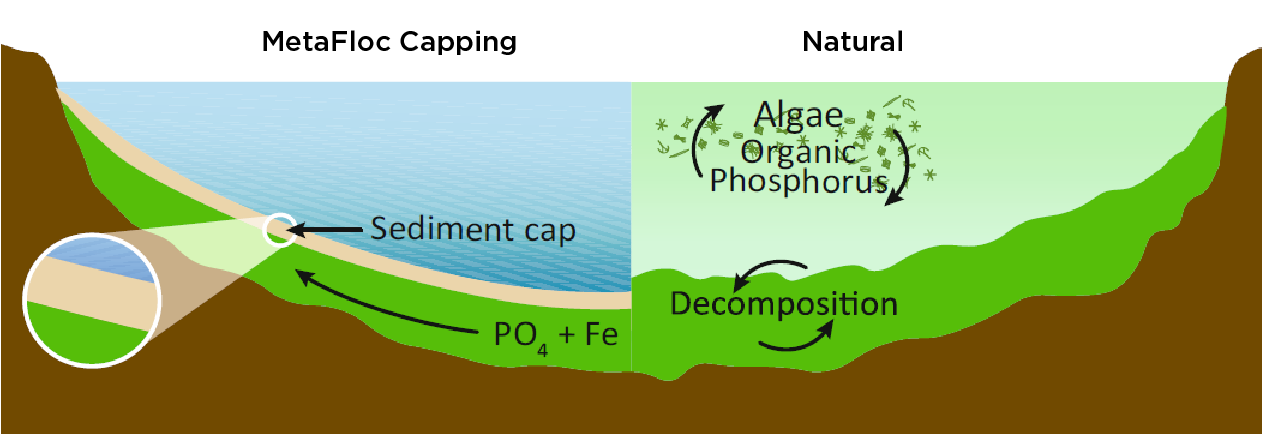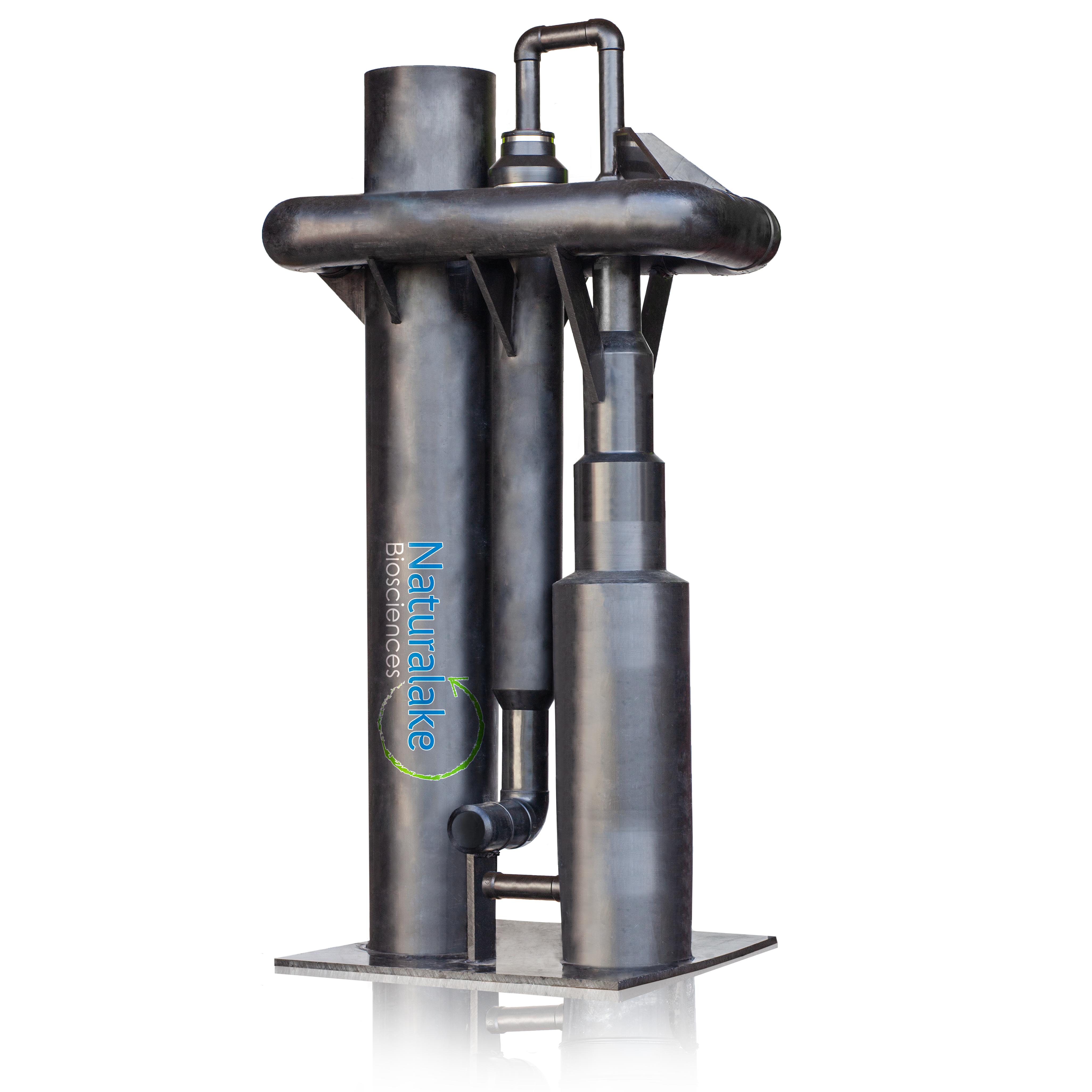
Understanding Internal Phosphorus Loading from Lake Sediments
by Patrick Goodwin, M.S., CLM

Total sediment phosphorus (TP) values >500 mg/kg are considered high, but the availability of that P cannot be known from total P concentrations. Any P fraction value> 50 mg/kg is considered elevated and may cause algal blooms. Iron-bound (oxygen/redox-dependent) and labile P (easily exchangeable gradient dependent) are the dominant available fractions, with the highest release rates and most easily accessible to algae. Organically bound P, which is released during bacterial decomposition, can be a significant source of P release driving blooms. Calcium-bound P is released during low or high-pH events (pH < 5 or pH > 8); however, this fraction is often P sink rather than a source since calcium will bind to P between pH 5-8. Aluminum-bound P is often the highest amount in the sediments since aluminum is the earth’s most abundant metal. Aluminum-bound P cannot dissociate unless subjected to extremely low pH events (<2) and therefore is not a fraction of concern.
Iron, labile, and organically bound P are the three main fractions of management interest. There are three ways of addressing internal P loading from sediments, and they are listed below in order of technical effectiveness.
Dredging
Removal of sediment is true restoration, setting a waterbody back in time with regard to accumulated material from years of input. The organic, nutrient-rich muck sediments are the source of most oxygen demand and internal phosphorus loading. However, the cost of dredging is very high, and the regulatory constraints are large.

Oxygenation
Restoring deep water oxygen (having dissolved oxygen > 10 mg/L over the sediments 24-7 365 days a year) can effectively reduce the iron-bound P fraction, sediment ammonification, HABs, and poor water clarity. It will also consolidate organic material, enhance the lakes’ fisheries, and likely shift the algal community to a more desirable one. Adding enough oxygen to counter the oxygen demand is a valid approach to solving multiple problems and will set the lake back in time (burn off legacy oxygen debt). This strategy does require ongoing operational costs, but the duration of benefits is forever.

P-inactivation
Sediment P inactivation is the process of inactivating or changing the P fraction(s) into forms that cannot be re-released for algae uptake. Many products exist, including alum, ferric, Phoslock ™, Eutrosrob ™, MuckBiotics ™, and the more recently launched MetaFloc ™. Cost, toxicity, specific gravity (how fast it will move down into the sediments), P binding efficacy (lbs. product per lb. P reduced), and the P fraction the product will address should be evaluated in the selection process. MetaFloc (phosphorus binder mixed with bacteria), for example, is not toxic to aquatic life and will address all Iron bound phosphorus while helping break down and inactivate the organic-bound P. Bacterial pellets, like MuckBiotics ™, are specifically designed for organically bound P in the sediments. All P-inactivation products have zero ongoing maintenance costs and are often less expensive than the above-mentioned two approaches. However, these products do not solve any other oxygen-related issue, and repeat applications are necessary once new material has settled on top of the capping layer.

About the Author
Patrick Goodwin, M.S., CLM, is a Water Resource Specialist at Natural Lake Biosciences, with over ten years of experience in water resource management. Specializing in data collection to evaluate nutrient loading and the consequences of that loading in terms of algal blooms and water clarity. Patrick has successfully restored multiple water bodies and is considered an expert in oxygenation and circulation techniques.



